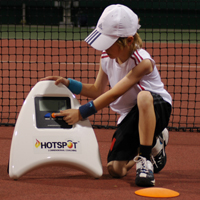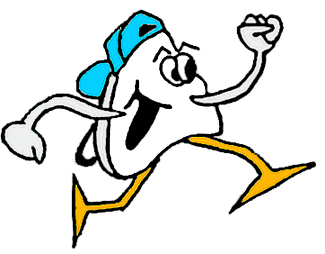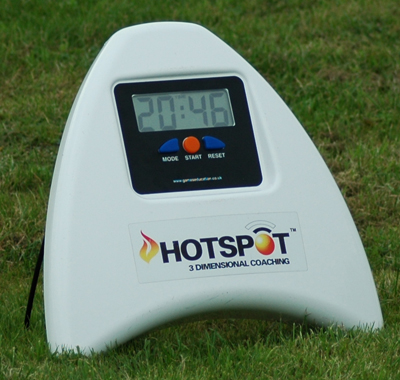- December 02nd, 2010
- Coaching/Training, General, News
- admin
In the past people (including me) have been critical of mini tennis as it hasn’t been adopted across the rest of the world (until recently) and that other countries have managed to produce world class tennis players the “good old fashioned way”.
Well firstly, the UK is not the rest of the world and let’s face we have to do stuff differently due to the culture of the country. With that said perhaps mini tennis is the way forward.
Mini Tennis Videos
WARM UP
PAIR DRILLING
POINT PLAY AGAINST THE COACH
MATCHPLAY
In the past people (including me) have been critical of mini tennis as it hasn’t been adopted across the rest of the world (until recently) and that other countries have managed to produce world class tennis players the “good old fashioned way”.
Well firstly, the UK is not the rest of the world and let’s face we have to do stuff differently due to the culture of the country. With that said perhaps mini tennis is the way forward.
The issues were that actually the message wasn’t delivered down to the coach force effectively enough and potentially a lot of the progressive nature of mini tennis from a coaching perspective was missed and lost.
In all fairness it has taken me a while to come the full circle to really embracing mini tennis particularly “red”. Just to recap there is a type of ball (the really squishy ones are LTA recommended), size of racket and court. These adaptations are to suit players from 3 years old to 8 years old and within the development there is beginner to advanced. One way I look at it is put yourself on a red court and if your 7/8 year old’s can compete hard against you then they are reaching the top of mini red. (I will be adding some videos of my players over the weekend).
For me the one variable that remains the same within mini tennis is the court. The ball and racket can change (within reason) and players can fully develop their skill set. For example, using a variety of “mini red” balls from sponge balls, of which there are a variety of grades to mini red hard balls can develop a host of skills that a mini red player needs. Similarly racket size can also be altered from the starter rackets that a just a bit bigger than a table spoon to a 25 inch weapon. The key is to have a clear idea of what it is you are trying to achieve.
Teaching opportunities are endless in mini tennis red from simple “over and in” tactics to “bailey method” footwork patterns. Everything in the game is available within mini tennis the difference is that it is all accessible by the mini red player also. Something to consider…do they have efficient, professional technique? can they hit a variety of shots from different court positions? do they understand attack, build/rally and defend and demonstrate this within points play? Can they serve to different positions, exploiting weaknesses and developing a favourite serve? If the answer is no to this then the player can still learn in mini red. If yes then they have developed a great skill set physically, mentally, technically and tactically have great foundations to reach their potential as a tennis player all at the age of 8!.
With the development of 2 players in particular at my club (videos to follow) has really shown me the powers of mini tennis red. My philosophy is simply to take the professional game in terms of the 4 factors and introduce them to my players at red. This means, right grips, stances, footwork. Developing a game style, being tactically aware and understanding there own strengths and weaknesses. Becoming physically competent through appropriate Strength and conditioning (including plyometrics, specific movement training) and developing a solid work ethic for the future. All of this can be done with a sponge ball, small racket on a red court.
I have recently come across comments such as “they hit it out a lot on the small red court they will do better at orange”
This is complete rubbish since it may be true in the short term but if the technique isn’t in place the player will just hit it out at orange too. The bigger courts etc will highlight even more the flaws in a player and although they will have the opportunity to “learn the hard way” i.e deal to cope they will not realise as much successful outcomes as if they were developed fully at red and moved to orange with better foundations.
Once again, I invite comments, thoughts and feedback as they purpose is to enhance our coaching and create better players! hope you enjoyed this and for more information on my personal approach email me at mike@gameseducation.co.uk. cheers.
Continue reading




this was a message I received from an extremely well respected coach.
it’s good stuff. I’m a big fan of mini tennis, fully agree with your sentiments on making the players tactically and technically advanced at a young age. I think it’s important to plan mini tennis really well with the main goal of keeping it fresh and challenging for the kids who now play so much more at a younger age.
I also feel knowing when the player can move up is an important skill for a coach. I believe in having players for example doing some sessions on orange and some on green to improve skill development and be able to adapt to the different challenges. Lastly I think there is a danger of doing too much rallying. Of course rallying is important but with the average rally length on the mens tour being 5 shots then I don’t see much rallying and think we need to teach these kids with the modern game in mind!
I am totally lost with it all! info over load!
Hi man! I really respect what you’re providing here. Keep going that way.
Hello! My mate has recommended me to read your resource. And I’d like to say that I really like what you’re providing here.